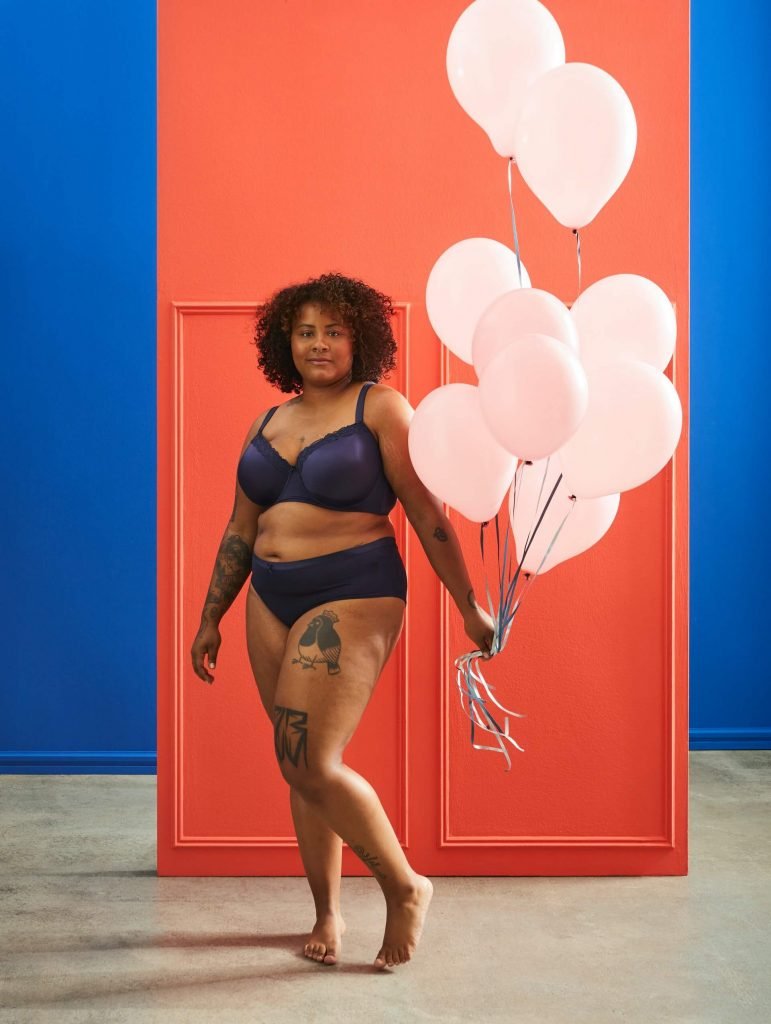Be More Body Positive This Year.
Being body positive means having a practical outlook of your appearance. This view should exist regardless of society’s standards and the views of popular culture.
The ideal size, shape, or appearance of the body varies greatly from person to person. Having a body-positive image means that you do not need to fit the images in the media.
Those who are body-positive…
- Challenge the views of society
- Help others build a helither view of their body
- Promote positive body image
- Encourage acceptance
- Build the self-confidence
- Adress unrealistic ideals and unattainable body standards
What is body positivity?
Body positivity is about more than challenging society’s unrealistic expectations. Being body positive means understanding the effect that society’s views have on us. Having a positive body image is vital to well-being. Likewise, the lack of content in media that is body-positive can hinder our happiness.
Poor body image can leave us feeling as if we have little value in the world.
Creating a positive view of your body allows you to feel comfortable in your skin. It also provides you with enhanced self-esteem and increased confidence.
Unfortunately, the world centers on the way that we look. For this reason, many people feel unattractive. Some may even feel they are unworthy. This perception is based on the way we look in comparison to the models we see in magazines or the actors they watch on TV.
The less obvious messages we receive through the media can also affect our body image.
What are the goals of the body-positive movement?

The goal of body positivity is to help others learn about the role media plays in our perception of ourselves. This popular movement also seeks to improve the relationship we have with our bodies.
Increased awareness of the norms laid out in the media lets us create a forum where people can come together to learn. What’s more, it helps us learn to love ourselves and our bodies.
Indeed, the body positivity community knows that judgments are made based on race, gender, sexuality, and disability. It also understands that size, shape, and physical appearance play a key role in the way we see ourselves.
Hence, the main goal of this group is to understand society’s idea of ‘the perfect body.’ In fact, only through knowledge, can we begin to see how these ideas affect our perception of ourselves.
Further understanding of body image allows us to notice impossible standards so we create a healthier, more loving relationship with our bodies.
A Short History Lesson.
The roots of body positivity started to grow back in the 1960s and have firmly taken hold today. What began as a ‘Fat Acceptance Movement‘ that focused on ending fat-shaming, has grown into a global movement touching every aspect of the self.
The term body positive was first coined in1996 when a psychotherapist treating a patient with an eating disorder created a website called thebodypositive.org. The site is still in existence today and it focuses on eradicating the negative messages within society. The aim of this site is to help people, mainly women, live happy, healthy lives filled with self-love.
In its current form, the body positivity movement we know today emerged around 2012. Initially, the group focused on unrealistic female beauty standards. However, the group has grown drastically and that focus has shifted to reach all areas of the self. The focus of the movement has changed. Now, body-positive people look for an acceptance of all body types and an understanding of the diversity of beauty.
Today, one of the main points of the body-positive movement is the acceptance of the natural changes that occur with age, pregnancy, and lifestyle.
Why A Body-Positive Outlook Matters?
People who have a body-positive outlook seek to change the way we allow messages from media to affect our well-being. Those involved in the body positivity movement work to uncover subtle messages within media. We may miss these messages. Thus, the group will reveal them to keep others informed. Furthermore, the group tries to show the ways that body image can affect mental health.
A positive body image plays a vital role in the way you feel about your appearance. It can also impact your self-worth. Research has suggested that negative body image is a factor in your risk for developing some mental health conditions.
Body image is a person’s subjective view of their body. Sadly, negative body image can affect children as young as 6. In fact, a study from 2015 found that more than 50% of girls aged 6-8 were unsatisfied with their bodies. On top of that, 33% of boys in this age group felt the same way. Commonly, the children in the study expressed that their current body weight was ‘less than ideal.’
There are numerous issues that can arise from negative body image, including:
- Higher Rates of Depression.
- Lower Self-Esteem.
- Eating Disorders.
- Increased Risk of Abuse.
- Higher Risk for Substance Abuse.
Images are a major point of interest in the issues above. It is not exposure to the images that is the problem, however. Rather, the ideals these images encompass and the messages they send over time.
Repeated exposure to the ‘thin ideal‘ found in media today is linked to changes in behaviors and emotions, especially in young children.
A body-positive approach aims to address the root issue by pointing out the message and explaining why it is unrealistic. By teaching others, including children, about the images seen in media, we can combat the ill effects.
Hope and fear for the future.

Those within the body positivity community hope that through education, the ideas and ideals of society can be shifted. By helping people recognize the influencers of poor body image, we open the door to acceptance and love.
While body-positive supporters aim to arm society with information, there has been some criticism. Some worry that body positivity may encourage extreme behaviors in those seeking comfort in their skin. Critics argue that by telling people to ‘do whatever they need to do to be happy’ they are perpetuating the problem. Essentially, critics feel this is giving permission to adhere to society’s standards if that is what makes them feel good.
The issue remains in the media messages we receive. We are taught from a very young age that thin equals beauty. Fit equals sexy. Fat equals ugly, and so on. This constant focus on size begins to impact our lives early on.
Thus, telling someone to look the way they want, often leads to them mimicking the models they see in magazines.
Is the body-positive fight futile?
It may seem as if there is no solution to this problem. Media continues to bombard us with unhealthy images, and social media forces us to show only our best selves. Children and adults alike are unable to escape the unrealistic ideas of how they should look. Even the bodies used in body positivity campaigns often fit into some sort of societal ideal.
The only hope we have to overcome this widespread issue is to talk about it openly and honestly. Share your flaws with pride, as it is these flaws that make you unique.
The aim of body positivity is an acceptance and love of your body exactly as it is. Unfortunately, this task is made more difficult by ever-increasing media that seeks to sell us their beauty ideals.
Telling people to accept themselves as they are does nothing if they are constantly faced with perfect people.
The reality is that until society changes its views on beauty, we can only combat problems as they arise. Talking openly with your children about the images they see every day can help. Show them the way that images are manipulated to make models skinner and prettier. Explain that each individual is unique and everyone is beautiful.
Above all else, give children the confidence they need to face the world. Teach them to turn a blind eye to society’s idea of perfection so we can all live a body-positive life.